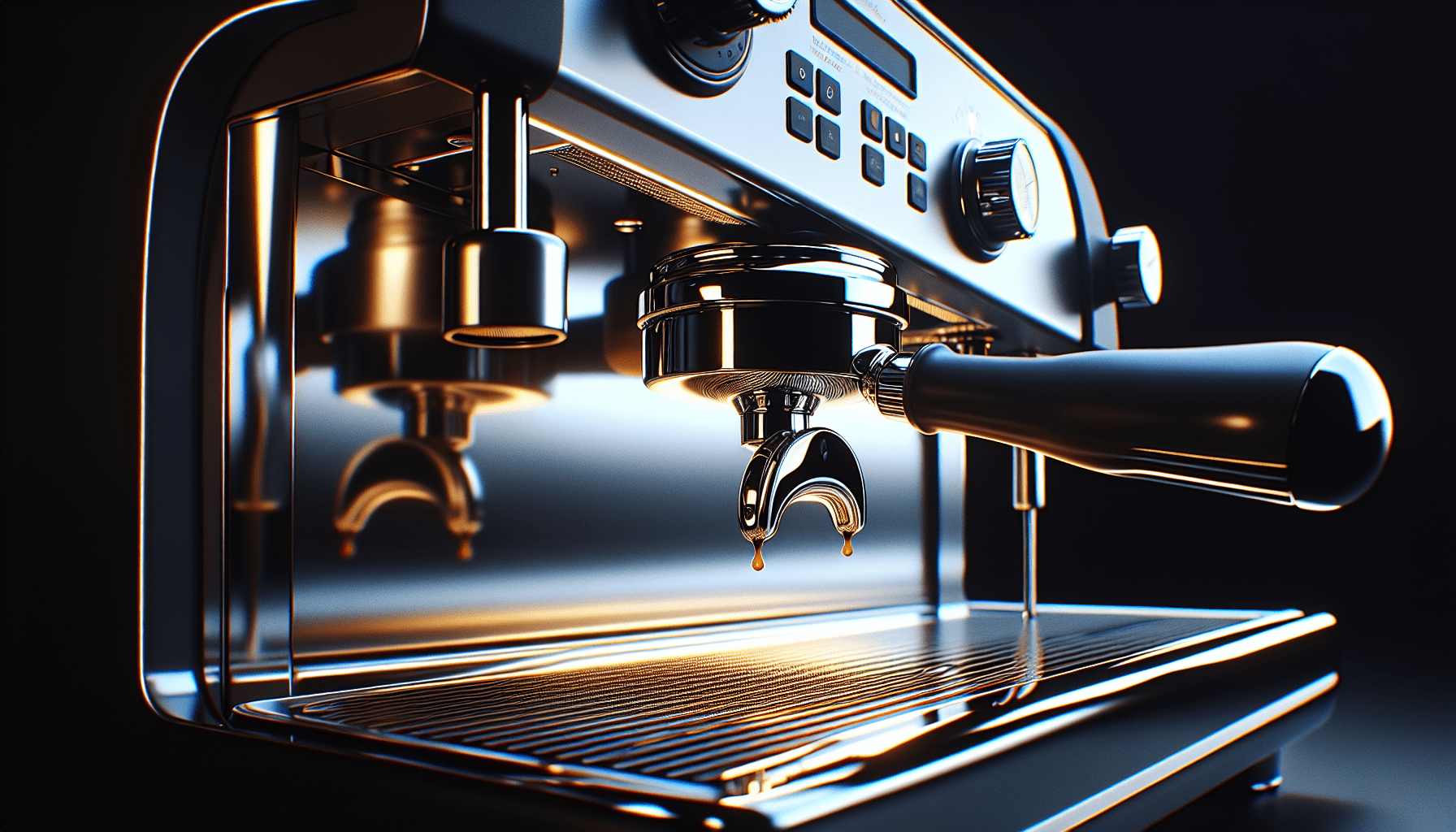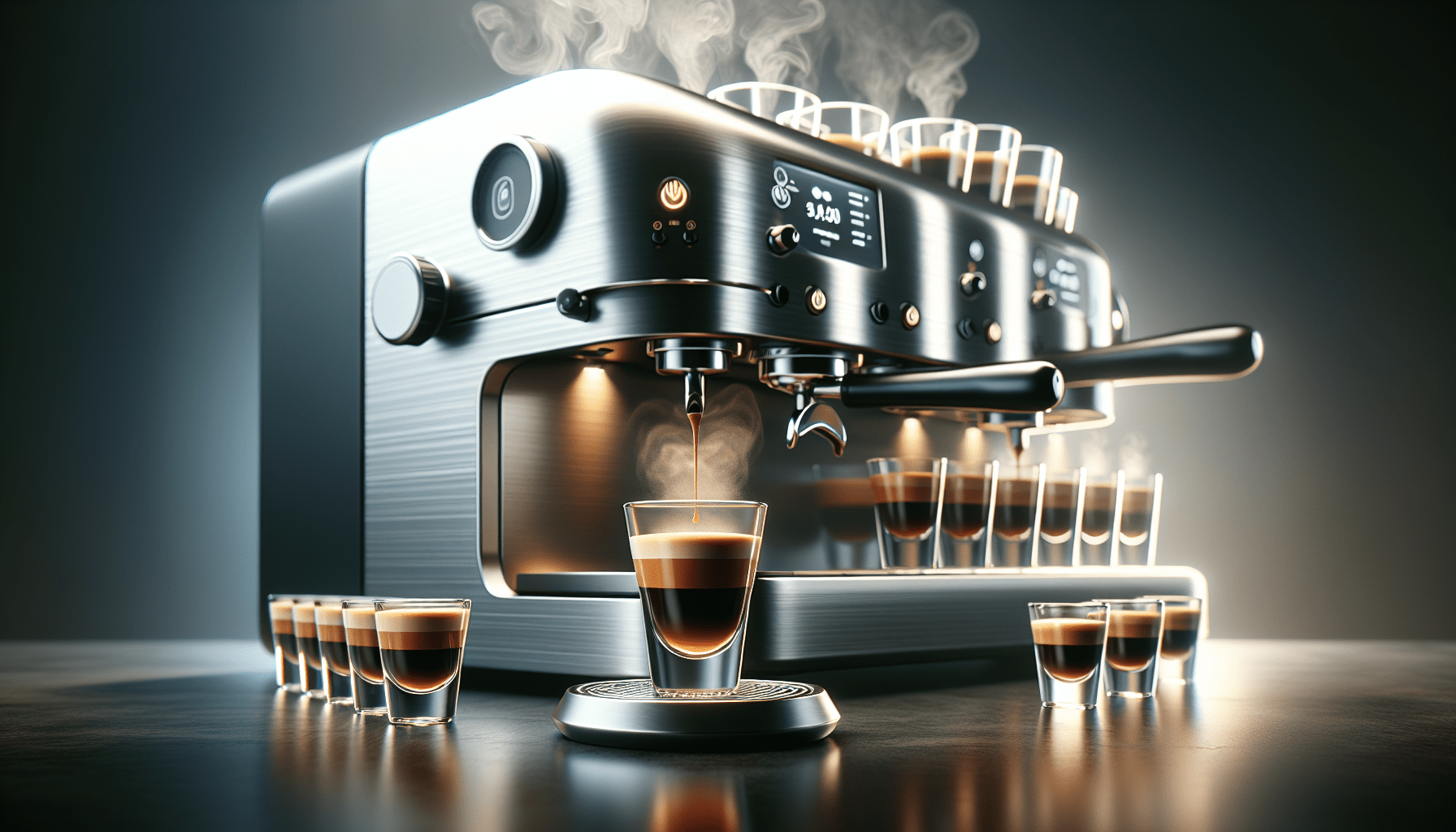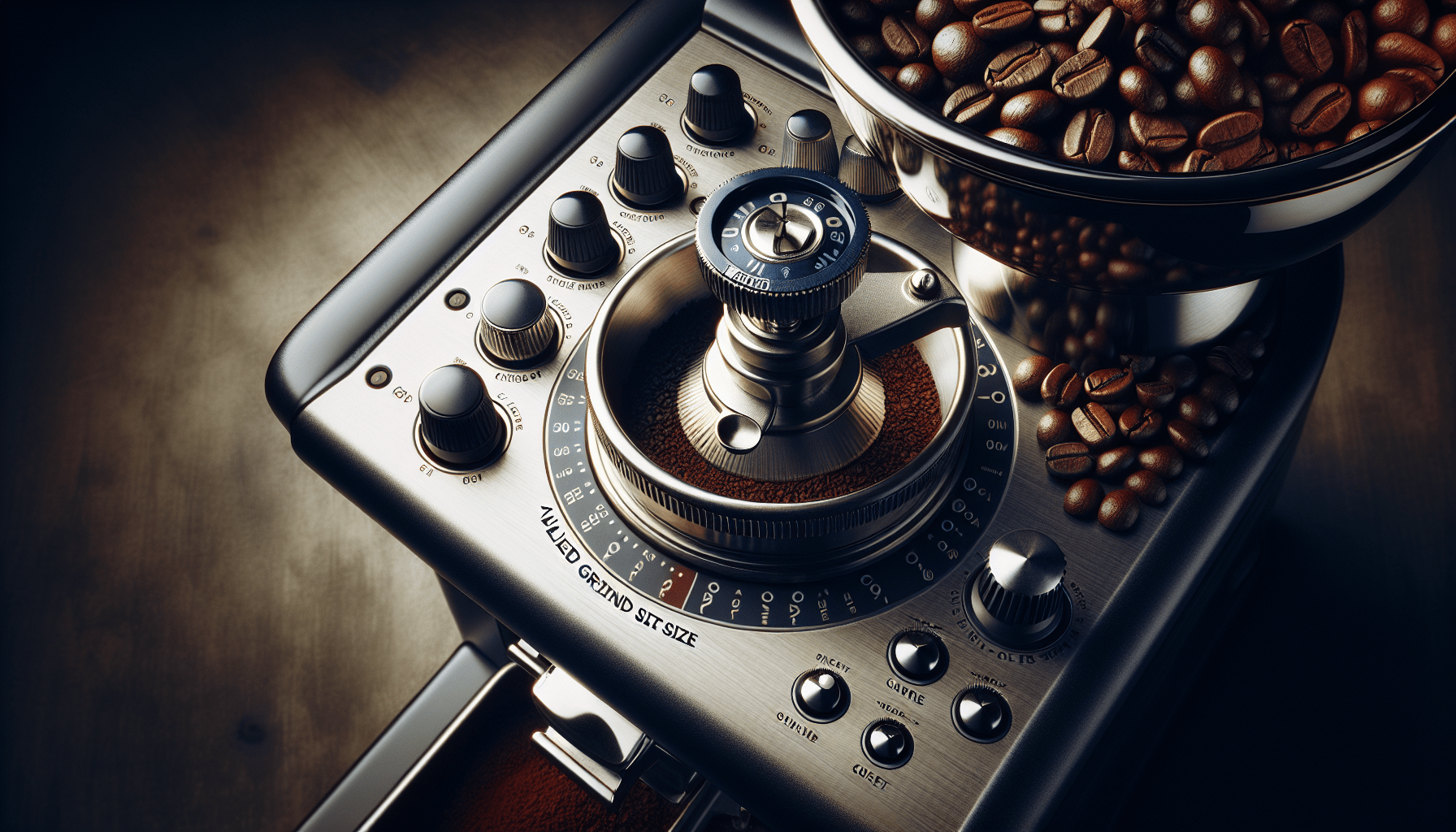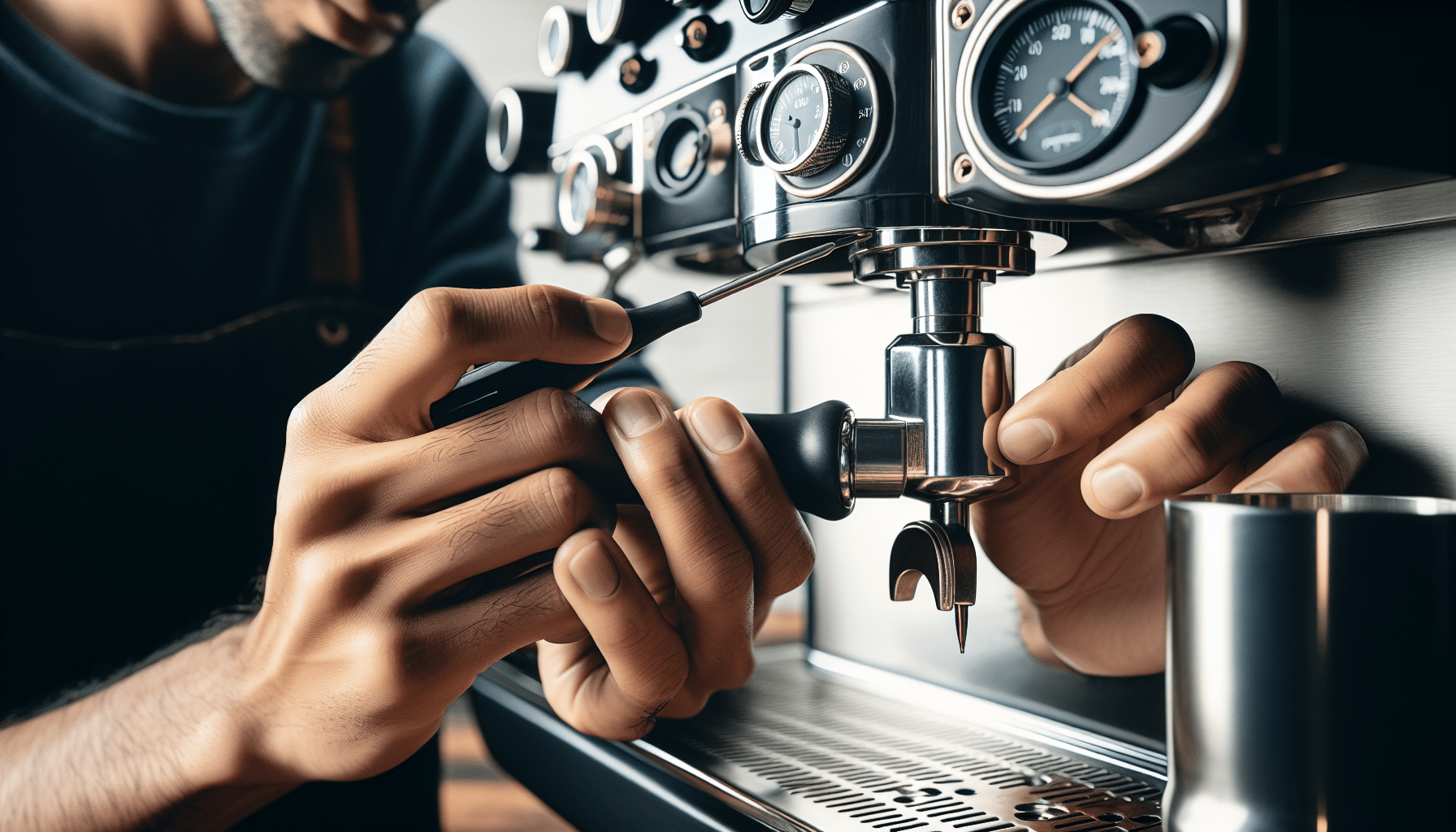Are you a coffee lover who has recently invested in a semi-automatic espresso machine? If so, you may be wondering about the best ways to keep it clean and in optimal condition. In this article, we will guide you through the steps to clean and maintain your semi-automatic espresso machine, ensuring that every cup of coffee you make is as delicious and enjoyable as the next. Say goodbye to any worries about cleanliness and hello to a seamless coffee brewing experience. Let’s get started!
Essential Supplies for Cleaning
To effectively clean and maintain your semi-automatic espresso machine, there are a few essential supplies that you will need:
Cleaning tablets
Cleaning tablets are specially formulated to remove coffee residue and oils that can build up inside the machine. They are typically designed to dissolve easily in water and are easy to use. These tablets are an important tool in keeping your espresso machine functioning optimally.
Descaling solution
Over time, minerals from water can accumulate and clog the internal components of your espresso machine. Descaling solution helps to remove these mineral deposits, ensuring that your machine continues to operate smoothly. It is important to descale your machine regularly to prevent any potential damage.
Clean cloth
A clean cloth is essential for wiping down the exterior of your espresso machine. This will help to remove any dirt or grime that may have accumulated and keep your machine looking clean and shiny.
Brush
A brush with soft bristles is necessary for effectively cleaning the nooks and crannies of your espresso machine. This will help to remove any stubborn coffee grounds or residue that may have gotten stuck.
Group head brush
The group head brush is specifically designed to clean the group head, which is the part of the machine where the coffee is brewed. This brush allows you to effectively remove any coffee grounds and oils that may have built up, ensuring that your espresso tastes fresh and flavorful.
Blind filter
A blind filter is a specialized tool that is used during the backflushing process. It helps to remove any residue that may have built up in the group head, ensuring that your espresso machine is clean and ready for use.
Cleaning towel
A cleaning towel is necessary for drying off the various components of your espresso machine after cleaning. It is important to ensure that all parts are thoroughly dry before reassembling the machine to prevent any potential damage.
Now that you have gathered all the essential supplies, let’s move on to the daily cleaning routine.
Daily Cleaning Routine
Maintaining a daily cleaning routine is crucial to keep your semi-automatic espresso machine in optimal condition. By following these steps, you can ensure that your machine produces delicious coffee every time:
Flush the group head
Before brewing your first shot of espresso, it is essential to flush the group head with water. This helps to remove any residue or coffee grounds that may be left from the previous use. Simply run water through the group head for a few seconds until it runs clear.
Wipe the steam wand
After each use, it is important to wipe down the steam wand to remove any milk residue. Use a damp cloth or sponge to wipe the wand thoroughly, making sure to remove any stuck-on milk. This will prevent any cross-contamination and ensure that your milk-based drinks taste great every time.
Empty and clean the drip tray
The drip tray catches any excess water and coffee that may drip during the brewing process. It is important to regularly empty and clean the drip tray to prevent any buildup of mold or bacteria. Simply remove the tray, empty the contents, and wash it with warm soapy water. Rinse and dry before placing it back into the machine.
Remove and rinse the portafilter
The portafilter is the part of the machine that holds the coffee grounds during extraction. After each use, remove the portafilter and knock out the used coffee grounds into a waste bin. Rinse the portafilter under running water to remove any remaining residue. Make sure to dry it thoroughly before reattaching it to the machine.
Clean the shower screen
The shower screen is located inside the group head and is responsible for distributing water evenly over the coffee grounds. Over time, it can become clogged with coffee oils and residue, affecting the quality of your espresso. To clean the shower screen, remove the portafilter and gently scrub the screen with a brush, using care not to damage it.
Clean the grinder
If your semi-automatic espresso machine has a built-in grinder, it is important to regularly clean it to maintain optimal performance. Check your machine’s manual for specific instructions on how to clean and maintain the grinder, as different models may have different requirements.
Wipe the machine exterior
Finally, it is important to wipe down the exterior of your espresso machine to remove any dirt or grime that may have accumulated. Use a clean, damp cloth to wipe the surfaces, making sure to dry them thoroughly afterward.
By following these simple daily cleaning steps, you can ensure that your espresso machine remains clean and ready for use. Now, let’s move on to the weekly cleaning routine.
Weekly Cleaning Routine
In addition to the daily cleaning routine, there are a few extra steps that should be taken on a weekly basis to keep your semi-automatic espresso machine in top shape. These steps will help to remove any buildup and maintain the performance of your machine:
Clean the water reservoir
The water reservoir is where you store the water for brewing your espresso. Over time, it can accumulate mineral deposits and bacteria, affecting the taste and quality of your coffee. To clean the reservoir, empty it completely and wash it with warm soapy water. Rinse it thoroughly and dry it before refilling it with fresh water.
Remove and clean the brew head
The brew head is the part of the machine where the water comes into contact with the coffee grounds, extracting the flavor. It is important to regularly remove and clean the brew head to prevent any buildup of residue. Check your machine’s manual for specific instructions on how to remove and clean the brew head properly.
Backflush the machine
Backflushing is a process that helps to remove any built-up coffee residue and oils from the internal components of the machine. This should be done on a weekly basis to keep your machine functioning optimally. To backflush the machine, you will need a blind filter and a cleaning tablet. Follow the manufacturer’s instructions on how to perform this process correctly.
Descale the machine
Over time, minerals from the water can accumulate and clog the internal components of your espresso machine, affecting its performance. Descaling should be done on a weekly basis to prevent any potential damage. Follow the manufacturer’s instructions on how to descale your particular machine, as different models may have different requirements.
Clean the steam wand tip
The steam wand tip can easily become clogged with milk residue, affecting the quality of your milk-based drinks. To clean the steam wand tip, remove it from the machine and soak it in warm soapy water for a few minutes. Gently scrub it with a brush to remove any residue, then rinse it thoroughly and dry it before reattaching it to the machine.
By incorporating these weekly cleaning tasks into your routine, you can ensure that your semi-automatic espresso machine remains clean and performs at its best. Now, let’s move on to the monthly maintenance tasks.
Monthly Maintenance Tasks
In addition to the daily and weekly cleaning routines, there are a few monthly maintenance tasks that should be performed to keep your semi-automatic espresso machine in optimal condition. These tasks will help to prolong the life of your machine and ensure its continued performance:
Deep clean the portafilter
The portafilter is the part of the machine that holds the coffee grounds during extraction. Over time, it can become clogged with coffee oils and residue, affecting the quality of your espresso. To deep clean the portafilter, soak it in warm water with a cleaning tablet, following the manufacturer’s instructions. Gently scrub it with a brush to remove any stubborn residue, then rinse it thoroughly and dry it before use.
Replace the group gasket
The group gasket is a rubber seal that sits between the group head and the portafilter. Over time, it can become worn out and affect the quality of your espresso. Check your machine’s manual for instructions on how to replace the group gasket and ensure that you have a spare gasket on hand.
Lubricate moving parts
To keep your espresso machine operating smoothly, it is important to regularly lubricate the moving parts. Check your machine’s manual for instructions on which parts require lubrication and use a food-grade lubricant to ensure that it is safe for use with your coffee machine.
Check the water filter
If your espresso machine has a built-in water filter, it is important to regularly check and replace it as needed. The water filter helps to remove impurities from the water, ensuring that your coffee tastes fresh and delicious. Follow the manufacturer’s instructions on how to check and replace the water filter correctly.
By performing these monthly maintenance tasks, you can ensure that your semi-automatic espresso machine remains in optimal condition for years to come. Now, let’s move on to troubleshooting some common issues that may arise.
Troubleshooting Common Issues
Even with regular cleaning and maintenance, issues may occasionally arise with your semi-automatic espresso machine. Here are some common problems and their possible solutions:
Machine not turning on
If your machine is not turning on, check that it is properly plugged into a functioning power outlet and that the power switch is in the “on” position. If the machine still does not turn on, check the fuse or circuit breaker to ensure that it has not tripped. If the issue persists, consult the manufacturer’s troubleshooting guide or contact customer support.
Low water pressure
Low water pressure can affect the extraction of your espresso and result in weak or under-extracted coffee. First, check that the water reservoir is properly filled and that the pump is functioning correctly. If the problem persists, there may be a blockage in the water line or valve. Consult the manufacturer’s troubleshooting guide for further instructions.
Poor coffee extraction
If your espresso tastes bitter or sour, it may be a sign of poor extraction. This could be due to a variety of factors, such as incorrect grind size, tamping pressure, or water temperature. Experiment with adjusting these variables to achieve the desired extraction. If the issue persists, consult the manufacturer’s troubleshooting guide or seek professional assistance.
Unevenly extracted coffee
Uneven extraction can result in coffee that tastes imbalanced or weak in certain areas. This could be caused by uneven distribution of coffee grounds in the portafilter or an uneven tamp. Make sure to distribute the coffee grounds evenly and tamp with consistent pressure. If the issue persists, consult the manufacturer’s troubleshooting guide or seek professional assistance.
Steam wand not working
If the steam wand is not producing steam or has weak steam, first check that it is properly connected to the machine and that the knob or switch is in the correct position. Ensure that the steam wand is clean and free of any milk residue. If the problem persists, there may be a blockage in the steam wand or a malfunctioning component. Consult the manufacturer’s troubleshooting guide for further instructions.
Machine leaking
If your machine is leaking water or coffee, check that all connections are secure and properly tightened. Inspect the various components, such as the water reservoir, portafilter, and steam wand, for any signs of damage or wear. If the issue persists, there may be a faulty seal or gasket. Consult the manufacturer’s troubleshooting guide or seek professional assistance.
By following these troubleshooting steps, you can often resolve common issues with your semi-automatic espresso machine. However, if the problem persists or if you are unsure about how to proceed, it is always recommended to consult the manufacturer’s troubleshooting guide or seek professional assistance. Now, let’s move on to some tips for long-term maintenance.
Tips for Long-Term Maintenance
To ensure the long-term performance and longevity of your semi-automatic espresso machine, follow these tips:
Regularly clean and descale according to manufacturer’s instructions
The most important step in maintaining your espresso machine is following a regular cleaning and descaling routine. Refer to the manufacturer’s instructions for specific guidelines on how often to clean and descale your machine. By keeping your machine clean and free from mineral buildup, you can prevent potential issues and prolong its lifespan.
Use filtered water to reduce mineral buildup
Using filtered water can significantly reduce the mineral buildup in your espresso machine. Hard water contains minerals that can accumulate and clog the internal components of your machine over time. By using filtered water, you can ensure that your machine operates at its best and extend its lifespan.
Store the machine in a dry place
It is important to store your espresso machine in a dry place to prevent any potential damage from moisture. Avoid placing the machine near sources of heat or excessive humidity, as this can lead to the growth of mold or damage the internal components. Additionally, make sure to cover the machine when not in use to protect it from dust and debris.
Avoid using harsh chemicals on the machine
When cleaning your espresso machine, it is important to avoid using harsh chemicals or abrasive cleaners. These can damage the machine’s finish and internal components. Stick to using the recommended cleaning products and follow the manufacturer’s instructions to ensure that your machine remains in optimal condition.
By following these tips for long-term maintenance, you can ensure that your semi-automatic espresso machine performs reliably for years to come. Remember to consult your machine’s manual for specific instructions and recommendations tailored to your particular model.
In conclusion, cleaning and maintaining a semi-automatic espresso machine is essential for ensuring the longevity and optimal performance of your beloved coffee companion. By following a regular cleaning routine, performing necessary maintenance tasks, troubleshooting common issues, and practicing long-term maintenance, you can enjoy delicious, café-quality espresso from the comfort of your own home for years to come.




